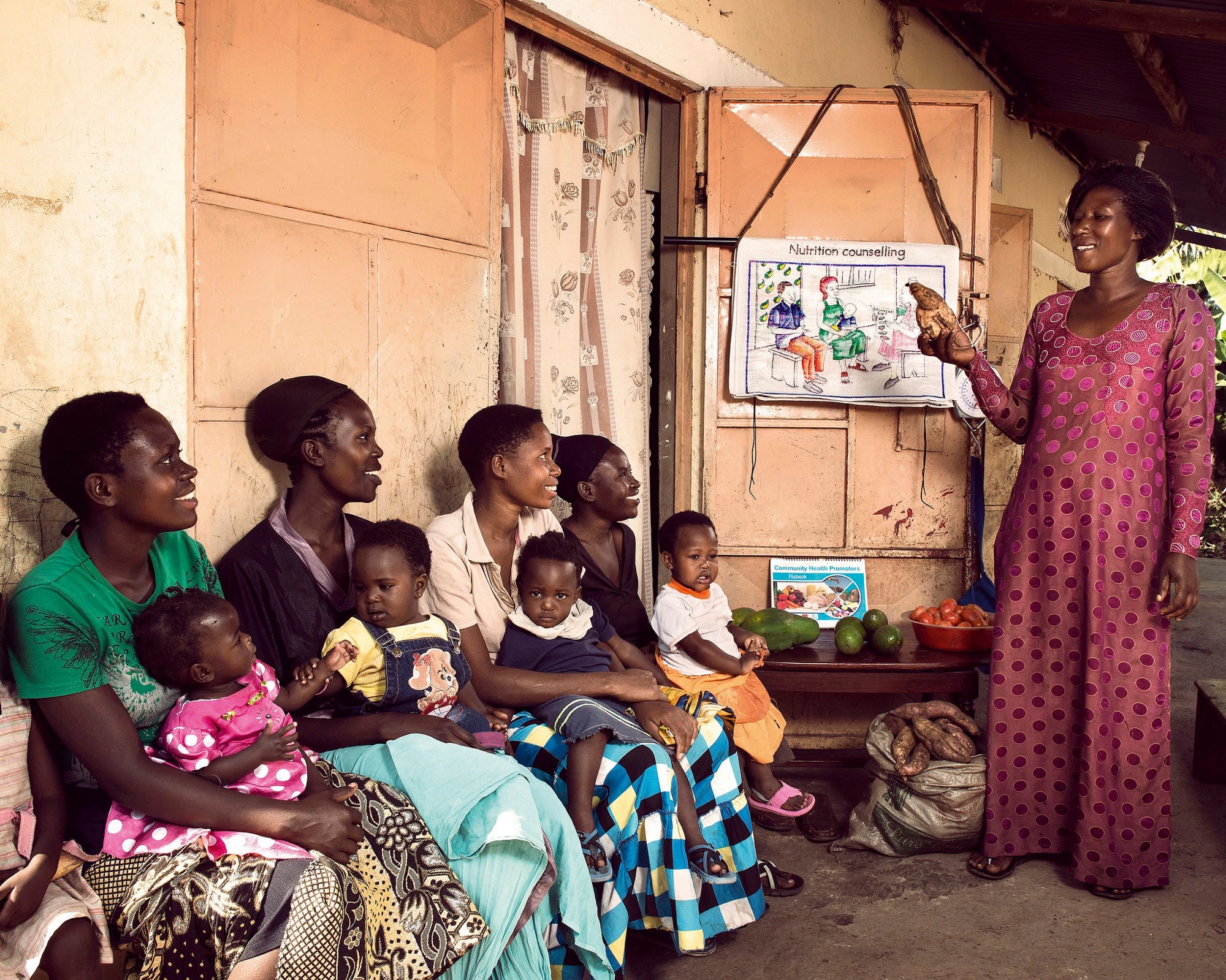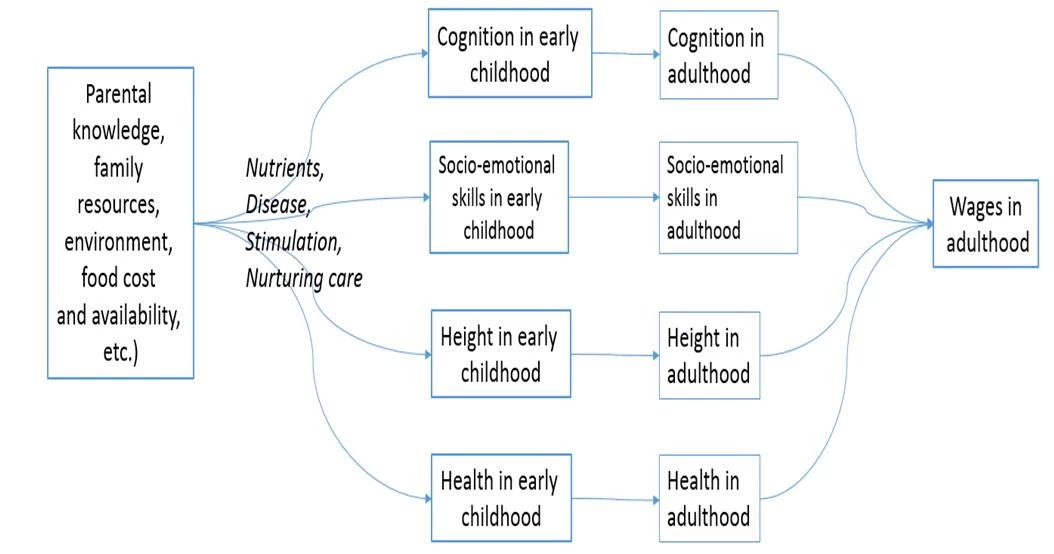
In a large, complex, or urgent situation, the command goes out: “All hands on deck!”
Sub-Saharan Africa faces such a clarion call now. It is the only region in the world with a growing number of children under the age of five who have stunted growth, meaning they are too short for their age. Although the number of children affected by stunting globally has decreased drastically since 1990, Africa is the only region that has seen an increase in the number of children stunted despite a decrease in the prevalence of stunting.
This trend, if not arrested and reversed, could have grim long-term implications for the region’s human capital and economic growth.
One of the reasons for this increase in stunting is because of the staggering scale of undernutrition in the region. It’s long been recognized that improving nutrition requires enlisting not only the health sector but also many others—agriculture; education; social protection; and water, sanitation, and hygiene (WASH). In fact, many initiatives have been based on the premise that tackling undernutrition requires multisectoral solutions. Hence, the “All hands” approach.
Unfortunately, the history of multisectoral initiatives on nutrition is littered with many underperforming projects. Simply involving multiple sectors has not necessarily produced the desired outcomes.
That’s why we have come up with a new report, “All Hands on Deck: Reducing Stunting through Multisectoral Efforts in Sub-Saharan Africa,” that lays the groundwork for more effective multisectoral action on reducing stunting by analyzing and generating empirical evidence useful for informing the joint targeting and, if necessary, the sequencing of sector-specific interventions in countries in Sub-Saharan Africa.
Our report—launched at the global conference, “Accelerating the End of Hunger and Malnutrition,” organized by the International Food Policy Research Institute (IFPRI) and the United Nations Food and Agriculture Organization (FAO) November 28–30, 2018, in Bangkok—also provides the lessons from successful country cases to identify the key ingredients of a multisectoral strategy that maximizes the chance of reducing undernutrition and hence stunting.
A Vicious Circle
In 2016, 155 million children worldwide under the age of five had stunted growth. Of those, 30 percent were in Sub-Saharan Africa. Africa also has the world’s highest rate of under-five stunting (33 percent, compared with a global average of 24 percent) and has made the slowest progress in reducing stunting since 1990, according to United Nations Children’s Fund (UNICEF) data.
Stunting from poor diets and illness becomes all the more devastating with age, bringing irreversible long-term consequences. It diminishes the chances of success in school, of earning an optimal adult income, and generally of living a healthy and productive life.

Given the critical importance of intervening earlier in a child’s life, our report focuses primarily on stunting in 33 Sub-Saharan African countries, 32 of which (all but Angola) participate in the global Scaling-Up Nutrition (SUN) initiative, a framework now endorsed by 60 low- and middle-income countries globally to scale up nutrition-sensitive interventions.
“All Hands on Deck” examines three drivers of adequate nutrition: household food security and care, health care access, and WASH. As the report documents, only a very small proportion of children in Sub-Saharan Africa have simultaneous access to all three nutrition drivers or even simultaneous access to two nutrition drivers. In three countries—Chad, Ethiopia, and Niger—more than half of the children lack access to even one of the determinants.
The report also finds that simultaneous access to adequate levels of two or more nutrition drivers is associated with lower stunting. This validates the importance of the joint targeting of interventions by different sectors in populations within geographic areas where stunting is prevalent.
Mission Possible? The Search for Synergies
“Nutrition-specific” interventions address the immediate needs for maternal and child food and nutrient intake and are delivered mainly through the health sector. Many other sectors deliver “nutrition-sensitive” interventions to address the key underlying determinants of nutrition.
Synergizing the two plays a critical role in determining the nutritional status of children. And foundational to all of these interventions is the role of income.
The report confirms that increases in household wealth are associated with a decrease in child stunting and that shortfalls in rainfall are associated with increases in child stunting. In this aspect, the report closely examines an important policy implication, especially in the context of climate change. Multisectoral nutrition interventions may be more effective alongside broader policies to mitigate the impacts of weather-related risks affecting income generation. Thus, programs and interventions aimed at increasing the level of income and/or decreasing the vulnerability of household income from weather-related shocks can significantly contribute to the decline of stunting and should be considered as components of any multisectoral effort.
Another fundamental ingredient of a successful strategy is the scaling-up of interventions that jointly target populations in geographic areas with high prevalence of stunting. With limited budgetary resources, the greatest decline in stunting can be accomplished by targeting the scarce resources to children who lack adequate access to any of the three nutrition drivers.
And when circumstances preclude a multisectoral approach, the report’s estimates also provide policy guidance useful for the sequencing of sector-specific interventions in target areas (or target populations).
Much work remains to be done to coordinate the targeting of service delivery if all key sectors are to contribute jointly in the reduction of stunting. The targeting of stunted children is not as simple as distinguishing between urban and rural areas or using “poverty maps” identifying the poor and nonpoor regions. The 33 country-specific notes in our report take a first step in this direction.
Useful resources
Download PDF: All Hands on Deck: Reducing Stunting through Multisectoral Efforts in Sub-Saharan Africa
Brief: The Economic Costs of Stunting and How to Reduce Them
Topic Brief: The World Bank and Nutrition
Blog post: Incentivizing Collaboration to Address Childhood Stunting
News feature: Reducing Childhood Stunting with an Adaptive Learning Approach (in Madagascar)
Publication: Tackling Stunting: Rwanda’s Unfinished Business


Join the Conversation